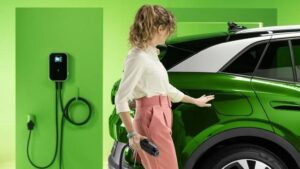Does an idle car charge the battery? Yes, it does! Many car owners wonder if their battery recharges while the vehicle is sitting unused. It’s a common question that arises when people have infrequently used cars or are planning extended periods without driving. Concerns about potential battery drain or the need for external charging often arise. In this blog article, we will explore the fascinating world of idle cars and battery charging. So, if you are curious about what happens to your battery when your car is not in use, keep reading to find out the answers you seek.
Does an Idle Car Charge the Battery?
Introduction
When it comes to car batteries, one common question that arises is whether an idle car can charge its battery. Many car owners may have experienced a dead battery after leaving their vehicle parked for an extended period. In this article, we will delve into the factors that affect idle car battery charging, debunk some common misconceptions, and provide useful tips to help you keep your car battery charged even when it’s not in use.
How Car Batteries Charge
To understand whether an idle car can charge its battery, it’s crucial to grasp how car batteries charge in the first place. When your car’s engine is running, the alternator generates electricity, which powers various components and charges the battery simultaneously. This process is known as “charging on the fly,” where the alternator supplies the necessary electrical energy.
The alternator is driven by the engine’s mechanical power and is responsible for converting mechanical energy into electrical energy. The electrical energy produced by the alternator is sent to the battery, which stores it for later use when the engine is turned off.
Factors Affecting Idle Car Battery Charging
While car batteries can charge while the engine is running, the charging process slows down or halts when the engine is off. Several factors influence the ability of an idle car to charge its battery effectively:
1. Age and Condition of the Battery: The age and condition of the battery play a significant role in its ability to hold a charge. Older or worn-out batteries may not retain a charge for an extended period, even when the car is running. This can impact the battery’s ability to charge while the car is idle.
2. Battery Capacity: The capacity of the battery, measured in ampere-hours (Ah), determines how much charge it can store. A higher capacity battery can hold more charge, allowing it to sustain longer periods without recharging.
3. Parasitic Drain: Parasitic drain refers to the continuous power draw from various electrical components in the vehicle, even when the engine is off. Items such as clocks, alarms, or electronic systems can gradually drain the battery. If the parasitic drain exceeds the charging capacity of the alternator, the battery may lose charge over time.
4. Temperature: Extreme temperatures, both hot and cold, can affect a battery’s performance. Cold temperatures can reduce the chemical reaction inside the battery, making it less efficient. On the other hand, excessive heat can accelerate chemical reactions and lead to faster self-discharge.
5. Duration of Idle Period: The length of time your car remains idle is crucial. If the car is left idle for a short duration, the battery may retain enough charge to start the engine. However, extended periods of inactivity can cause the battery charge to deplete gradually.
Common Misconceptions About Idle Car Battery Charging
There are some common misconceptions about idle car battery charging that are important to address:
1. Idling the Engine Charges the Battery: It is commonly believed that letting the engine idle can charge the battery. However, this is a misconception. The alternator requires the engine’s mechanical power to generate electricity, so idling the engine without driving does not produce enough power to charge the battery effectively.
2. Starting the Car Periodically Helps: While starting the car periodically may seem like a good idea, it can actually do more harm than good. Frequent short drives without allowing the engine to reach optimal operating temperature can prevent the battery from fully charging, resulting in a net loss of charge over time.
Tips to Keep Your Car Battery Charged during Idle Periods
Although idle cars do not charge their batteries as efficiently as running engines, there are several steps you can take to help maintain battery charge during extended idle periods:
1. Disconnect Battery: If you anticipate leaving your vehicle unused for an extended period, consider disconnecting the battery. By disconnecting the negative terminal, you can prevent parasitic drain from slowly depleting the battery.
2. Use a Battery Maintainer: Battery maintainers, also known as trickle chargers, are devices that provide a low, steady charge to the battery when it’s not in use. These devices help counteract parasitic drain and keep your battery charged without overcharging it.
3. Avoid Extreme Temperatures: Whenever possible, park your car in a covered or shaded area to minimize exposure to extreme temperatures. This can help reduce the strain on the battery and extend its overall lifespan.
4. Limit Electronic Device Usage: Minimize the use of electronic devices, such as the car’s radio or interior lights, when the engine is not running. This reduces the strain on the battery and helps preserve its charge for longer periods.
5. Regular Maintenance: Ensure regular maintenance of your vehicle, including battery checks and cleanings. This can help identify any potential issues early on and optimize battery performance.
In conclusion, an idle car does not charge its battery as efficiently as when the engine is running. Factors such as battery age, capacity, parasitic drain, temperature, and the duration of the idle period impact the battery’s ability to charge. It is important to understand these factors and take appropriate measures to maintain battery charge during idle periods, such as disconnecting the battery or using a battery maintainer. By implementing these tips, you can help prolong the life of your car battery and ensure a reliable start when you decide to hit the road again.
Frequently Asked Questions
Does an idle car charge the battery?
Yes, an idle car does charge the battery to some extent. However, the rate at which the battery gets charged depends on various factors.
What factors affect the battery charging rate of an idle car?
Several factors can affect the battery charging rate of an idle car. These include the age and condition of the battery, the temperature, the car’s electrical system, and the length of time the car remains idle.
How long does it take for an idle car to charge the battery fully?
The time it takes for an idle car to fully charge the battery can vary. On average, it can take around 4 to 24 hours for a battery to charge fully, depending on the factors mentioned earlier.
Can an idle car’s battery get discharged if left idle for too long?
Yes, if a car is left idle for an extended period, the battery can get discharged. This is because even when the car is not running, there are certain electrical systems that draw power from the battery, such as the clock, alarm system, or even a small current used by the car’s computer.
What can I do to maintain the battery charge of an idle car?
To maintain the battery charge of an idle car, you can periodically start the engine and let it run for a few minutes. This helps recharge the battery. Additionally, you can also use a battery maintainer or trickle charger to keep the battery charged during extended periods of inactivity.
Can I rely solely on an idle car to keep the battery charged?
While an idle car does charge the battery to some extent, relying solely on it may not be sufficient, especially if the car remains idle for extended periods. It is recommended to use additional means, such as periodic engine starts or using a battery maintainer, to ensure the battery remains charged.
Final Thoughts
An idle car does not actively charge its battery. When the engine is not running, the alternator, which is responsible for charging the battery, does not generate power. However, there are instances where an idle car can indirectly charge the battery. For example, if the car is connected to a battery maintainer or a trickle charger, it can slowly replenish the battery’s charge over time. Additionally, some modern cars have features like regenerative braking or start-stop systems, which can help recharge the battery even when the engine is not actively running. However, it’s important to note that relying solely on an idle car to charge the battery may not be sufficient, and it is recommended to use alternative charging methods when necessary. Therefore, while an idle car can have some impact on charging the battery, it is not the most efficient or reliable method.



